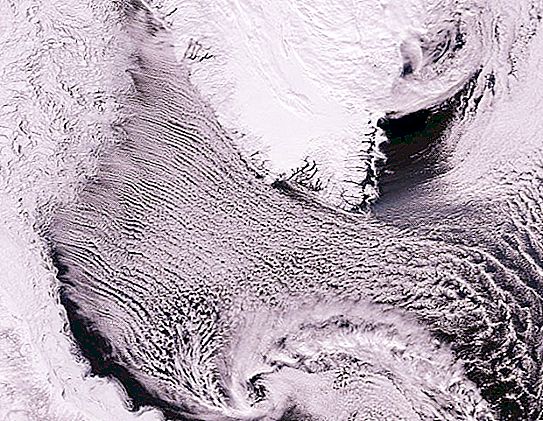Even before the beginning of the sixties of the twentieth century, the Aral Sea was the fourth largest lake in the world. It all started with intensive water intake for irrigation of cotton and rice fields from the rivers feeding the Aral - Amu Darya and Syr Darya, which reduced the filling of the sea to a critical point. And then, in the early sixties, the already irreversible reversal of the drying process was launched … Since that time, the problems of the Aral Sea began.
In 1989, the Aral Sea broke up into 2 isolated reservoirs - the Great Aral Sea belonging to Uzbekistan and the Small Aral Sea - Kazakhstan. By 1996, it had lost ¾ of its water volume, and the bulk of the inhabitants had to leave the area. By 2003, the volume of water was only about 10%, and its surface area was about a quarter of the original. The coastline receded by 100-150 km, the salinity of the water increased by two and a half times. The sandy-solonchak desert, formed on the site of the once deep-sea, with an area of 38, 000 km2, was called Aralkum.
After the retreating sea, a dry seabed remained, covered with salt and sediments of agricultural pesticides and pesticides, washed away from local fields. Frequent dust storms characteristic of the desert take it all up into the air and spread it over vast territories. Dust sometimes spreads to distances of 700-800 km and reaches such Russian regions as the Chelyabinsk and Orenburg regions. Inhalation of such toxic dust undermines people's health, reduces immunity, leads to allergic reactions and many other dangerous diseases. The local population, according to medical experts, suffers from widespread respiratory diseases, digestive disorders, cancer of the esophagus and throat, anemia. Cases of kidney, liver and eye diseases have become more frequent.
Aral was once the richest seafood supplier. Now the level of salinity in it is so great that many species of fish died. The most common inhabitant in recent years remained the Black Sea flounder, introduced in the 70s, which is most adapted to life in salty sea waters, but by 2003 it also disappeared: the salinity of the water 2-4 times began to exceed its usual marine environment. Too high levels of pesticides are often found in the tissues of fish now caught, and this, of course, also affects the health of the Aral Sea region. The fishing and processing industry is dying away, and the population is left without work …
Environmental problems of the Aral Sea affected not only the Aral Sea region. More than 100 thousand tons of salt and fine dust mixed with various poisons and chemicals are spread annually from the dried surface, exerting a devastating effect on everything living around. The effect of pollution is enhanced by the fact that the Aral Sea is located in the direction of a strong stream of air, which contributes to the removal of dust into the high atmosphere, so it is not surprising that traces of salt flows are observed in Europe and even (who would have thought!) The Arctic Ocean.
With lowering the water level in the Aral Sea, the level of groundwater also decreased, accelerating the process of desertification of the surrounding area. Since the mid-1990s, instead of lush green shrubs, trees and grasses, only rare bunches of plants (halophytes and xerophytes) adapted to dry and saline soils are visible here. Mammals and birds, however, survived no more than half of the local species. The climate within the 100-kilometer zone from the original coastline has changed: it became colder in winter, hotter in summer, air humidity decreased, which naturally affected the amount of precipitation, droughts became more frequent and the duration of the growing season decreased.
The natural environment can be destroyed very quickly, and its restoration is a long and difficult process. The full restoration of the Aral Sea, alas, is already impossible, but attempts are being made (and not unsuccessfully) to restore the northern - Small Aral. The Government of Kazakhstan, with the assistance of the World Bank, is taking measures to raise the water level in it and, thereby, reduce its salinity.





